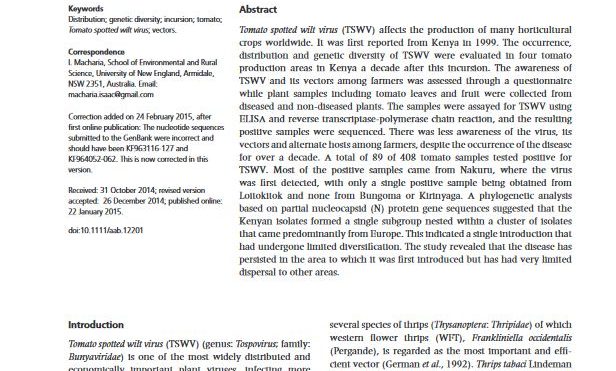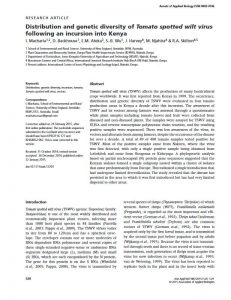Tomato spotted wilt virus (TSWV) affects the production of many horticultural crops worldwide. It was first reported from Kenya in 1999. The occurrence, distribution and genetic diversity of TSWV were evaluated in four tomato production areas in Kenya a decade after this incursion. The awareness of TSWV and its vectors among farmers was assessed through a questionnaire while plant samples including tomato leaves and fruit were collected from diseased and non-diseased plants. The samples were assayed for TSWV using ELISA and reverse transcriptase-polymerase chain reaction, and the resulting positive samples were sequenced. There was less awareness of the virus, its vectors and alternate hosts among farmers, despite the occurrence of the disease for over a decade. A total of 89 of 408 tomato samples tested positive for TSWV. Most of the positive samples came from Nakuru, where the virus was first detected, with only a single positive sample being obtained from Loitokitok and none from Bungoma or Kirinyaga. A phylogenetic analysis based on partial nucleocapsid (N) protein gene sequences suggested that the Kenyan isolates formed a single subgroup nested within a cluster of isolates that came predominantly from Europe. This indicated a single introduction that had undergone limited diversification. The study revealed that the disease has persisted in the area to which it was first introduced but has had very limited dispersal to other areas.
Region: Kenya
Date published:
2015
Published by:
Wiley
Type of resource:
Journal article
Resource topic:
Tomatoes
Project/Programme: Not specific
Pest/Disease: Tomato spotted wilt virus
Pages:
10
File type:
External link (719 KB)




